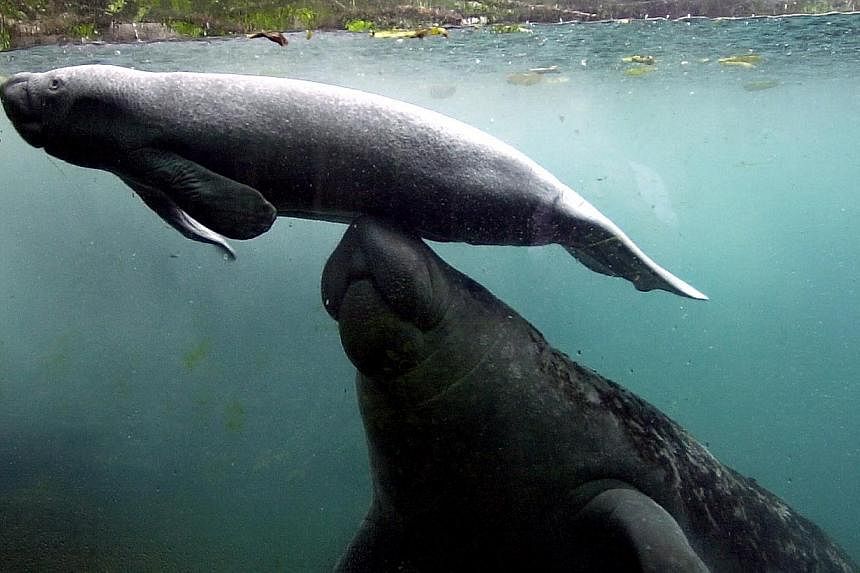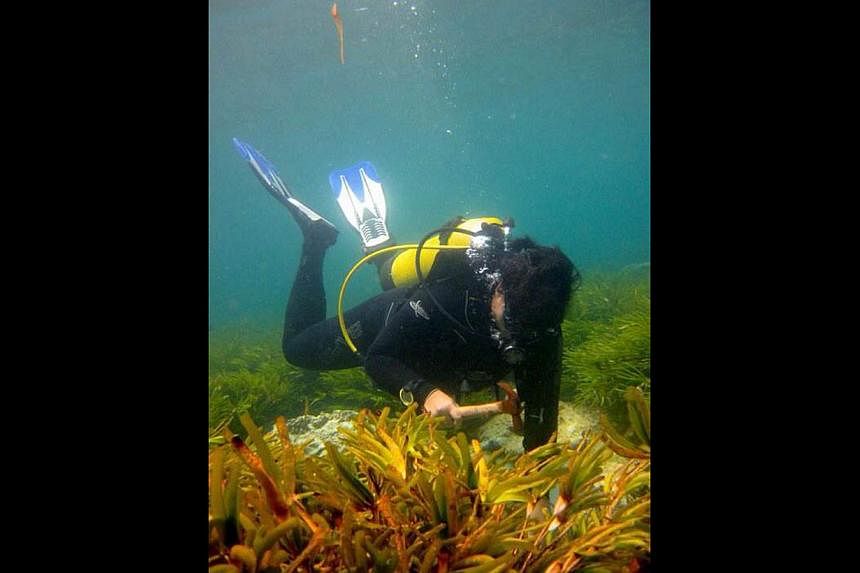Land reclamation is putting Singapore at risk of losing all of its seagrass meadows - lush, underwater "gardens" of the only flowering plants that live in the sea.
A National University of Singapore (NUS) study has found that filling the island's coastal waters with sand over the almost five decades since independence has killed 1.6 sq km of seagrass - nearly half of the country's total.
Dredging and reclamation works either bury it or cloud the water with sediment, blocking out the sunlight that it needs to thrive.
"One of the main threats to seagrasses is declining water quality," said marine ecologist Siti Maryam Yaakub, who recently graduated after carrying out the four-year study as a PhD student.
"It can take weeks to months for the suspended sediment to settle."
Seagrass meadows are often confused with seaweed, which is an algae. They were once commonplace along parts of the west and east coasts, and the southern islands.
Today, the largest continuous stretches are congregated at Chek Jawa in the north, and Pulau Semakau and Cyrene Reef in the south. These can be seen at extremely low tides.
Future land reclamation would threaten these last few remaining habitats, said Dr Siti.
Singapore's land use plans beyond 2030, released in January last year, indicate possible large-scale reclamation at Pulau Semakau, the country's sole landfill site.
Chek Jawa at Pulau Ubin has also been previously under threat of reclamation.
Seagrass meadows harbour crabs and prawns, and are nursery habitats for juvenile fish.
Losing the meadows would also mean losing the critically endangered and elusive dugong, or sea cow, said Dr Siti. It passes through local waters and depends on seagrass as its main food source.
Given Singapore's small land area, Dr Siti does not expect the Government to scale back reclamation plans. She only hopes that the "unsung" seagrass will be given the same consideration as similarly threatened coral reefs.
Indeed, various recent government efforts to relocate Singapore's declining number of reefs are helping to save them from reclamation and port development.
This could save the country's seagrass too, said Dr Siti.
"The fact that we still have seagrass when a lot of big cities in coastal areas have lost theirs is something to be proud of... we should try as much as possible to preserve what we have left."
Dr Siti's work was published last month in the Marine Pollution Bulletin.
NUS marine biologist, Professor Chou Loke Ming, who has dived in seagrass meadows, compared them to "tall fields of lalang grass" in the sea. "But we shouldn't appreciate them just for their beauty. We have to appreciate what they provide as an ecosystem and a habitat," he said.


